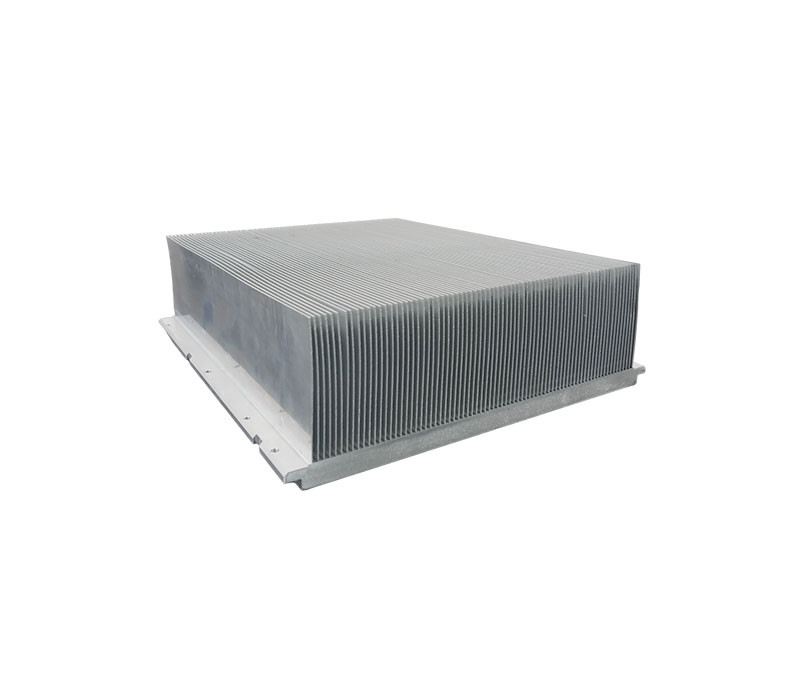The shovel tooth radiator is a commonly used heat dissipation device, widely used in various industrial and construction industries. However, during use, the shovel tooth radiator may also encounter various faults, which affect the heat dissipation effect and work efficiency. This article will analyze the causes and treatment methods of faults in the shovel tooth radiator.
1、 Fault cause
1. Strong winds, strong winds, or excessive dust accumulation
The heat dissipation effect of the shovel tooth radiator is related to ventilation and air flow. Strong winds, strong winds, or excessive dust accumulation can affect ventilation and air flow, thereby affecting the heat dissipation effect. Especially in construction sites or industrial production environments, the air contains a large amount of dust, particulate matter, and pollutants, which can damage the hinges and teeth of the shovel tooth radiator, cause deformation or looseness of the shovel tooth, and affect the heat dissipation effect of the shovel tooth radiator.
2. Coating detachment or corrosion
The surface of the shovel tooth radiator has been treated and sprayed to ensure its non deformation, corrosion resistance, and durability. However, when used for a long time or in harsh environments, the surface coating of the shovel tooth radiator may peel off or corrode, resulting in a decrease in the corrosion resistance, durability, and heat dissipation effect of the shovel tooth radiator.

3. Hinge failure or looseness
The shovel tooth radiator is composed of multiple hinges, and failure or looseness of the hinges can affect the tension and heat dissipation effect of the shovel tooth radiator. Hinge failure may be due to poor quality of hinge material or prolonged use, while hinge looseness may be caused by improper installation or vibration in the operating environment.
4. Leakage or poor drainage
The shovel tooth radiator needs to discharge water and other liquids during the heat dissipation process. If water leaks or the drainage is not smooth, it can cause damage to the shovel tooth radiator. Water leakage may be caused by deviation or damage to the seal of the shovel tooth radiator, while poor drainage may be caused by accumulated dust, dirt, or other solid substances.
2、 Processing method
1. Clean and maintain the teeth and hinges of the shovel tooth radiator
The teeth and hinges of the shovel tooth radiator need to be regularly cleaned and maintained to ensure their normal use. When cleaning, you can use a soft bristle brush and clean water to clean the teeth and hinges of the shovel tooth radiator. For maintenance, you can use lubricating oil or anti rust paint.
2. Regularly check the coating of the shovel tooth radiator
The coating of the shovel tooth radiator needs to be inspected regularly. If any peeling, blistering, cracking, etc. are found, they need to be repaired or replaced in a timely manner. When selecting coatings, the selection should be based on the corrosion, heat resistance, and weather resistance requirements of the usage environment.
3. Add protective measures
To increase the service life and safety of the shovel tooth radiator, a locking device can be added at the hinge of the radiator to prevent the hinge from loosening; Add a collector at the bottom of the radiator to remove discharged moisture and other liquids.
4. Maintain drainage pipes and seals
The drainage pipes and seals of the shovel tooth radiator need to be regularly cleaned and maintained to ensure that the drainage pipes are unobstructed, and the seals are not deviated or damaged. When using, it should be avoided to push the shovel tooth radiator towards a higher or farther place in the drainage pipeline, to avoid causing water to be unable to be discharged.
In summary, the causes and handling methods of the failure of the shovel tooth radiator are relatively complex, and maintenance and upkeep should be carried out according to the actual situation. Only by strengthening maintenance and monitoring can we maintain the heat dissipation effect and work efficiency of the shovel tooth radiator.